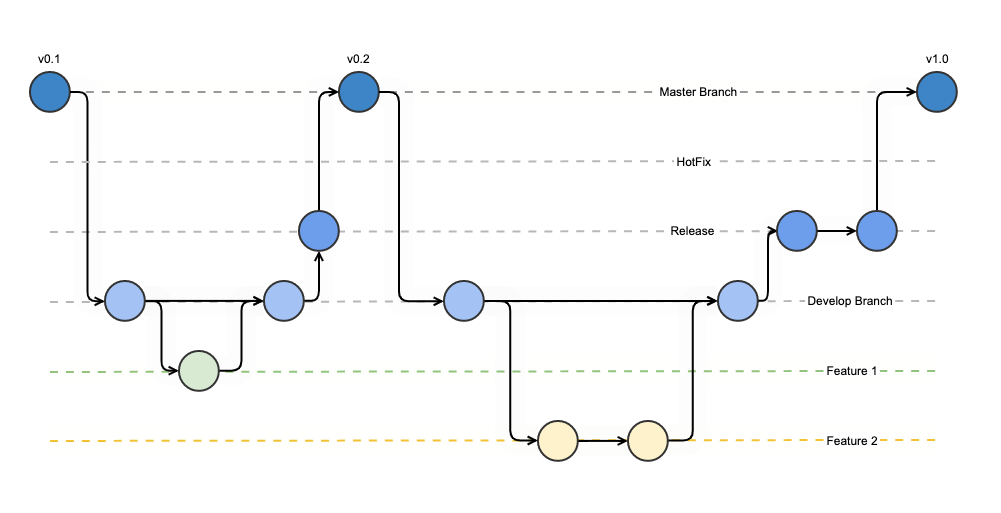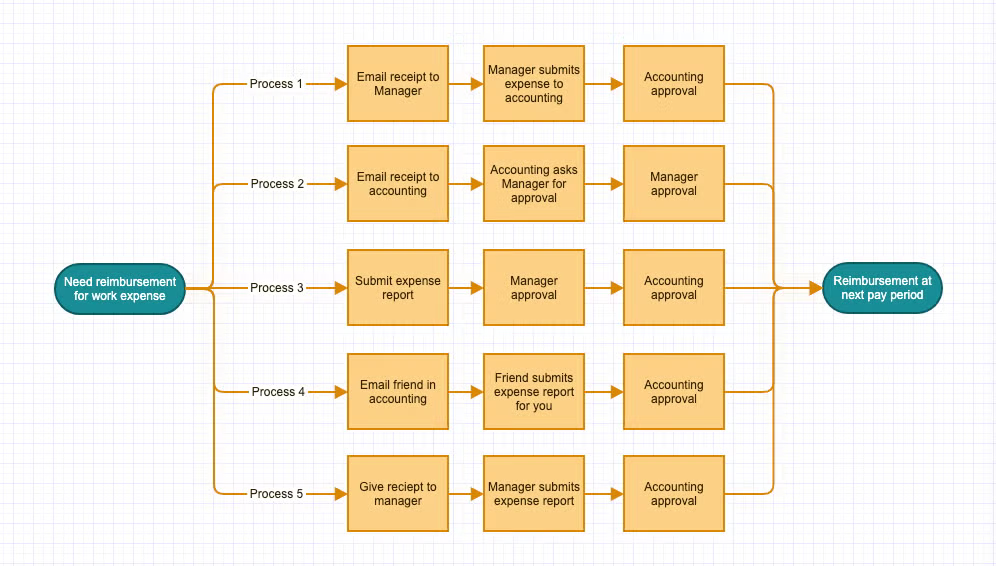What is a Workflow Diagram?
Workflow diagrams are flowcharts that provide a visual overview of a process or system. They help facilitate an understanding of how data and information flow throughout a system or an organization.
Specifically, a workflow diagram is a type of process flowchart, a technical flowchart that helps managers or designers organize a process that creates a clear output. It's used to solve problems, communicate information, and optimize processes as part of process modeling.
A typical workflow diagram will include a starting point, an endpoint, and some steps in between, which are all connected with arrows. Our blog on the most common flowchart symbols can help you know which shapes to use for each part of the workflow diagram.
Back to topWhat Are Workflow Diagrams Used For?
Workflow diagrams can be used to train new employees, increase workflow efficiency, create or organize your team around a new standard operating procedure, or clarify business processes by showing a high-level overview.
However, these applications can apply to multiple industries. Here are just a few of the industries that will most commonly use workflow diagrams to illustrate key processes.
Software Development
Gitflow diagrams are a form of workflow diagram — in fact, their name comes from a combination of “git” and “workflow.” These diagrams are a popular branching model that helps teams organize their work so they can quickly and visually describe the workflows associated with the branching strategy for product releases.
For large teams, diagramming workflows is important because they can be complex. These teams often adopt a branching strategy for planning and structuring releases, managing work, and being more productive, but it’s important to be able to describe that structure.
Software teams can either use a gitflow diagram to get buy-in for a new strategy before implementing it or to visualize a current strategy of existing workflows, visualizing branches across different teams. When team members understand where their role is in the larger workflow, they can avoid time-consuming merge conflicts and work more efficiently.

Business Operations
Workflow diagrams can be part of Standard Operating Procedures or SOPs that help standardize processes for training and efficiency.
Workflow diagrams can be similar to BPMN diagrams, but the workflow is only a small part of the larger business process. BPMN diagrams include other aspects of the business to map various people, data, and information beyond just the workflows that are involved.
Workflow charts are also similar but different to data flow diagrams, which show the flow of information or data rather than the flow of the work.

Product Development
Workflows don’t just have to be internal processes. They can also depict the flow of activity that a user takes through a product or website and product teams can map out the journey to help them improve the user experience.
Want to learn more about how flowcharts, like workflow diagrams, are used in different industries? Check out our resource, What is a Flowchart Used For? >>
Back to topHow to Make a Workflow Diagram
To make your own workflow diagram, start working from one of our workflow diagram templates or open a blank Gliffy diagram to follow these steps.
1. Determine Scope and Purpose
Be specific about what you are trying to communicate with your workflow chart. Are you mapping out a current workflow, visualizing an ideal workflow, or creating a new workflow to introduce to your team? Is this an internal workflow of your team’s activities or a workflow that describes the way your customers interact with your product?
Clearly defining the scope and purpose of the flowchart before beginning your diagram will save you time and help you create a more effective visual.
2. Make an Outline
Start with the essentials — what are the core steps of the workflow that must be included? This doesn’t need to include every detail, but make sure you have everything you’ll need to build the structure of your workflow diagram.
3. Fill in the Details
Take the structure you’ve already created and add further steps or information as necessary. If you need to get help or input from others on your team or even in different departments when diagramming a cross-functional workflow, make sure to do so rather than making assumptions.
Sometimes, a workflow diagram may require additional documentation to provide context on how to complete a step. Since one of the purposes of a workflow document is to provide a smoother onboarding experience, they should allow a newcomer to the team to complete a process with little to no assistance.
If you’re creating a workflow diagram for your Confluence documentation, it may be helpful to use your workflow diagram to link off to other pages that can provide additional information necessary to complete a task.

Back to top
Beyond the Workflow Diagram
You can use your workflow diagram to conduct a workflow analysis that evaluates the process with the goal of improving its efficiency or effectiveness. Visualizing the process at a high level makes reviewing it easier. You’ll be able to spot problem areas and potential bottlenecks, and it makes it easier to prioritize tasks, maybe even removing the ones that aren’t necessary.
Your workflow diagram can also be a piece of the strategic planning process for your team or for the organization as a whole. Examine current workflows and compare them to your team’s goals or organizational goals to ensure that there is alignment between the two. If there isn’t, you’ll want to consider building out ideas for new or revamped workflows.
For additional tips on visual clarity, see how engineering data diagrams can help simplify complex processes.
Back to topConstruct a Workflow Chart With Gliffy
Get started for free, and start dragging and dropping your way to better documentation.
New to diagramming? Check out these resources: